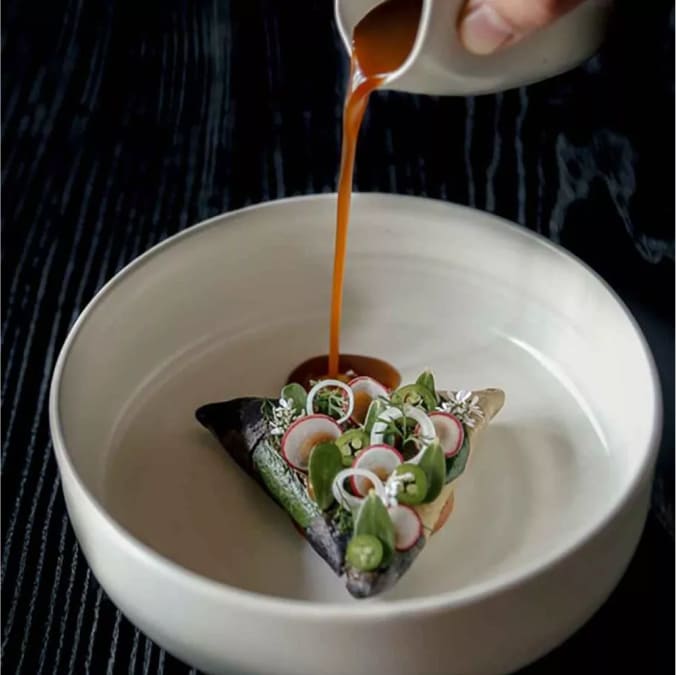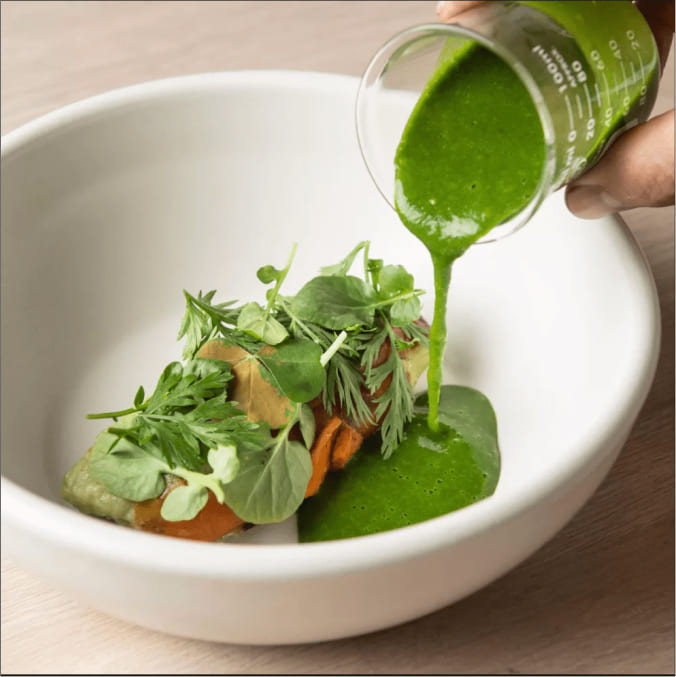In the loamy fields of Tequila, Jalisco, fertilized by the volcano that sits on the town’s edge,
rows of blue agave stretch to the end of eyeshot, growing broad and spindly until the jimador comes
in. This master of craft knows just when the agave plant is ready for harvest – when the piña at its
core will be mature, having sequestered the essential sugars that will be transformed into flavorful
tequila.
So begins the story of each bottle of Reserva de la Familia, the crowning
achievement more than 230 years in the making from the first family of tequila. The best tequila
tastes cared for, with its delicate elements fostered and its strong notes empowered. Throughout
Mexican gastronomy, the lesson is the same: handcrafted is vital. Like Reserva’s venerable jimadors,
the chefs of The MICHELIN Guide know they are stewards of tradition, transforming ancient staples
into dishes that define a culture.




















The Paloma featuring Reserva de la Familia
Ingredients
1.5 oz Reserva de la Familia Organic Platino
2 oz clarified oro blanco
0.25 oz clarified oro blanco super juice
0.5 oz timut peppercorn syrup
Top with soda
Directions
Build ingredients in a Collins glass over ice, stir, and add long oro blanco twist














"We want to expand the landscape of Mexican food in New York with Corima. There are increasingly great options to eat Mexican food here, but these restaurants primarily focus on the cuisines of Oaxaca, Puebla, and Mexico City,” explains Chef Fidel Caballero of Manhattan's One MICHELIN Star Corima. “I want to bring the flavors and ingredients from northern Mexico in a way that is both exciting and delicious."

Chef Roberto Alcocer’s work in the kitchen of Oceanside, California’s One MICHELIN Star Valle is just as precise. With gossamer blades and the most seasonal produce, he plates up sculptures, like a chayote that blooms like a water lily on a green aguachile pad. Mexican gastronomy is the oeuvre of an artisan who turns simplicity into mastery.






Chef Roberto Alcocer’s work in the kitchen of Oceanside, California’s One MICHELIN Star Valle is just as precise. With gossamer blades and the most seasonal produce, he plates up sculptures, like a chayote that blooms like a water lily on a green aguachile pad. Mexican gastronomy is the oeuvre of an artisan who turns simplicity into mastery.












José Cuervo was an agave farmer who first purchased his own land to grow agave in 1758. In 1795, the King of Spain gave Cuervo's grandson the first license to distill agave wine, which eventually became tequila. Today, José Cuervo is led by the 11th generation of the Cuervo family.

When combined in a kitchen like Brooklyn’s One MICHELIN Star Oxomoco, known for expertly experimenting with geography, the ingredients become famously Mexican and globally unique. Take their swordfish tacos, which evoke both sand-in-your-toes beach bars and the capital city’s Lebanese pockets, with its labneh and salsa árabe topping. Or the Berkshire pork chop, with pistachio pipián mole from Mexico’s central plateau and charro beans that recall the borderland north. Stars of their homeland become a brilliant constellation when joined.




When combined in a kitchen like Brooklyn’s One MICHELIN Star Oxomoco, known for expertly experimenting with geography, the ingredients become famously Mexican and globally unique. Take their swordfish tacos, which evoke both sand-in-your-toes beach bars and the capital city’s Lebanese pockets, with its labneh and salsa árabe topping. Or the Berkshire pork chop, with pistachio pipián mole from Mexico’s central plateau and charro beans that recall the borderland north. Stars of their homeland become a brilliant constellation when joined.








Baldio is the only restaurant in Mexico City that has been awarded a MICHELIN Green Star. Taking inspiration from London's Silo, this zero-waste restaurant is a beautiful tribute to working with, and not against, nature. Supplied by a network of 50 families and projects that practice regenerative farming, as well as their own chinampas in Xochimilco, where most of the vegetables are grown, Baldio is a celebration of the bounty of Mexico.
